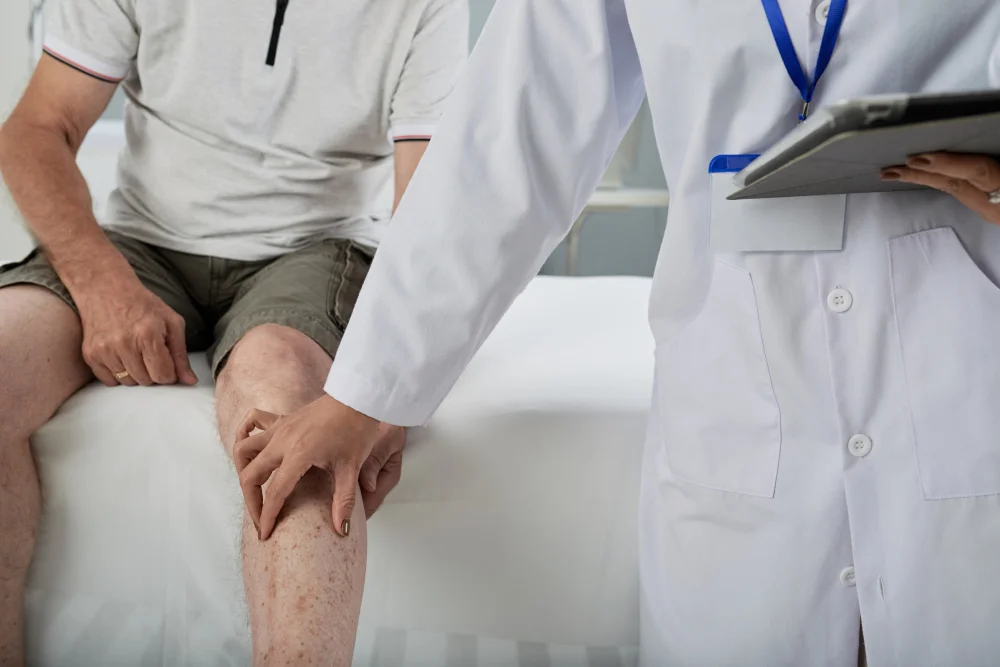Ever stood up too fast and felt your heart race, your vision blur, and your balance waver? Now imagine that sensation happening every time you get up—every day. That’s life with POTS Syndrome.
When I first met Sarah, a 22-year-old university student, she described living with POTS (Postural Orthostatic Tachycardia Syndrome) as “constantly feeling like I’m about to faint after doing something as simple as walking to the kitchen.” As a physiotherapy student with a keen interest in neurovascular conditions, I decided to dive deeper. I quickly realised how under-discussed and misunderstood this syndrome is—especially in physiotherapy circles.
This article explores how physiotherapy and structured exercises can genuinely help manage POTS symptoms, backed by real-world experiences, expert opinions, and scientific evidence. If you or someone you know is battling POTS, this guide may offer more hope than you think.
What is POTS Syndrome?
POTS stands for Postural Orthostatic Tachycardia Syndrome. It’s a form of dysautonomia that affects how blood flows through the body, particularly when transitioning from lying or sitting to standing. Individuals with POTS often experience:
- Rapid heartbeat (increase of over 30 beats per minute within 10 minutes of standing)
- Light-headedness
- Fatigue
- Nausea
- Exercise intolerance
It’s estimated that 1 in 100 teenagers may be affected, though it often goes undiagnosed or misdiagnosed as anxiety or chronic fatigue syndrome. Johns Hopkins Medicine and other reputable institutions highlight its growing prevalence, particularly in young women.
Why Physiotherapy Matters for POTS
While medication and dietary adjustments (like increasing fluid and salt intake) are common treatments, physiotherapy offers a non-invasive and often underutilised path to symptom management.
According to Dr. Satish Raj, a leading autonomic disorders specialist, “Exercise, especially when tailored, is among the most effective long-term treatments for POTS. But it has to be done right.”
Physiotherapy helps by:
- Gradually reconditioning the cardiovascular system
- Improving blood circulation
- Strengthening the lower limbs to prevent blood pooling
- Enhancing autonomic regulation
Let’s unpack how this looks in practice.
The Right Way to Exercise with POTS: Not All Workouts Are Equal
Start Horizontal
In the early stages, upright exercises can worsen symptoms. Instead, physiotherapists often recommend reclined or semi-reclined exercises:
- Recumbent cycling
- Swimming or water aerobics
- Rowing
- Resistance band work while lying down
Sarah, the student I mentioned earlier, started with just 10 minutes of recumbent cycling every other day. Within a month, she noticed fewer dizzy spells and more stable heart rates.
Slow Progression is Key
Jumping straight into standard cardio routines can be dangerous. Experts recommend a gradual increase in duration and intensity over weeks or months.
A 2018 study published in the Journal of the American College of Cardiology showed that a 3-month graded exercise programme improved POTS symptoms in over 70% of participants.
Compression Garments and Hydration
Combining exercise with compression garments (especially thigh-highs) helps maintain blood pressure. Staying hydrated and increasing salt intake (as advised by a physician) also supports exercise tolerance.
What Role Does a Physiotherapist Play?
Physiotherapists are instrumental in creating a customised, monitored plan that takes into account:
- Severity of symptoms
- Coexisting conditions (e.g. Ehlers-Danlos Syndrome)
- Emotional wellbeing and exercise fear
In my clinical placement, we developed a hybrid model for POTS patients that included:
- Breathing exercises to regulate the autonomic nervous system
- Supine core strengthening
- Gentle progression to upright activities like treadmill walking
Monitoring tools like the NASA Lean Test were used to track progress in heart rate response.
Real-Life Wins: Stories of Improvement
One of the most inspiring cases involved a 16-year-old girl named Amara, who was almost housebound due to POTS. With 5 months of structured physiotherapy and a multidisciplinary approach (including a nutritionist and counsellor), she returned to school full-time and joined her local dance class.
Her mother said, “Physio didn’t just get her walking—it gave her back her confidence.”
Common Mistakes to Avoid
Even well-intentioned exercise can go wrong. Here are common pitfalls:
- Overexertion: Leads to post-exercise crashes.
- Standing workouts too soon: Can cause rapid heart rate spikes.
- Neglecting hydration: Exacerbates symptoms.
Always work with a physiotherapist who understands dysautonomia.
Frequently Asked Questions (FAQs)
How often should I exercise with POTS?
Start with 3-4 times per week of low-intensity, horizontal exercises. Gradually increase based on tolerance.
Is it normal to feel worse before getting better?
Yes, some initial discomfort is common, but severe crashes mean the plan needs adjusting.
Can I do yoga or Pilates?
Yes, as long as they are adapted to avoid upright positions initially. Focus on breathing and supine poses.
Do I need a referral for physiotherapy?
In many countries, no referral is needed, but it’s best to check local healthcare guidelines.
Takeaway: Movement is Medicine—When Done Right
POTS may be a lifelong condition, but it doesn’t have to be a life sentence. Physiotherapy offers a safe, effective, and empowering path to better symptom control.
If you or someone you care about is struggling with POTS, consult a physiotherapist who understands autonomic disorders. Start small, stay consistent, and celebrate each little win.
Have you or a loved one tried physiotherapy for POTS? Share your story in the comments below. Your experience might be the encouragement someone else needs.




